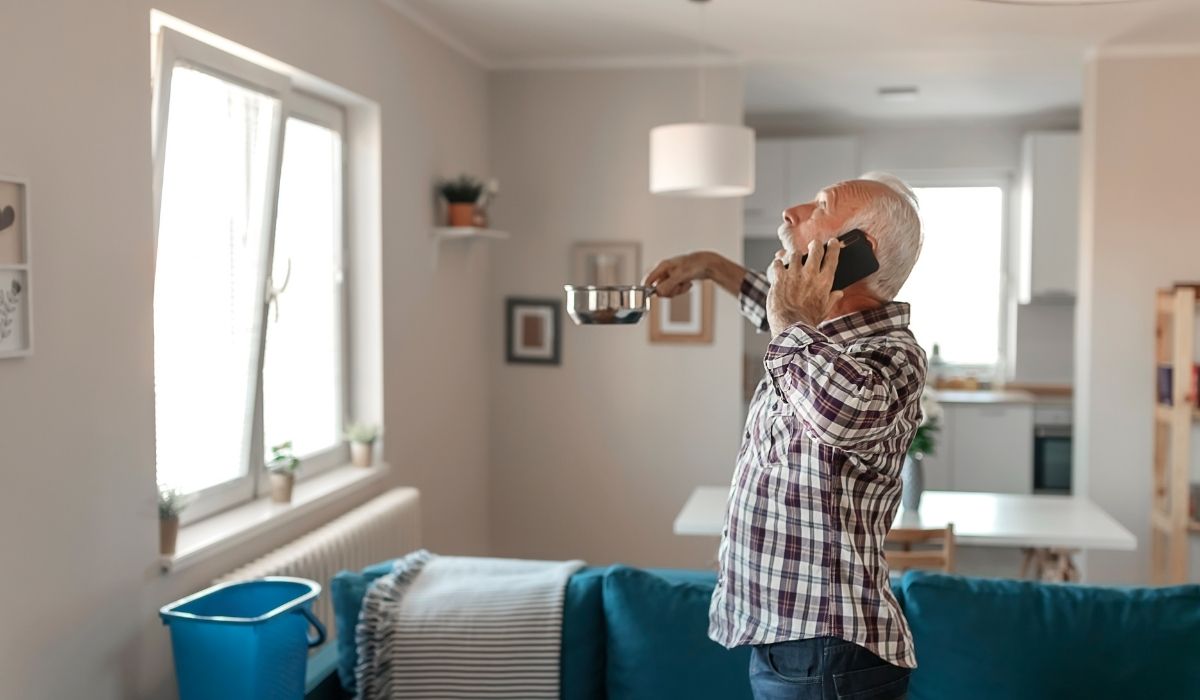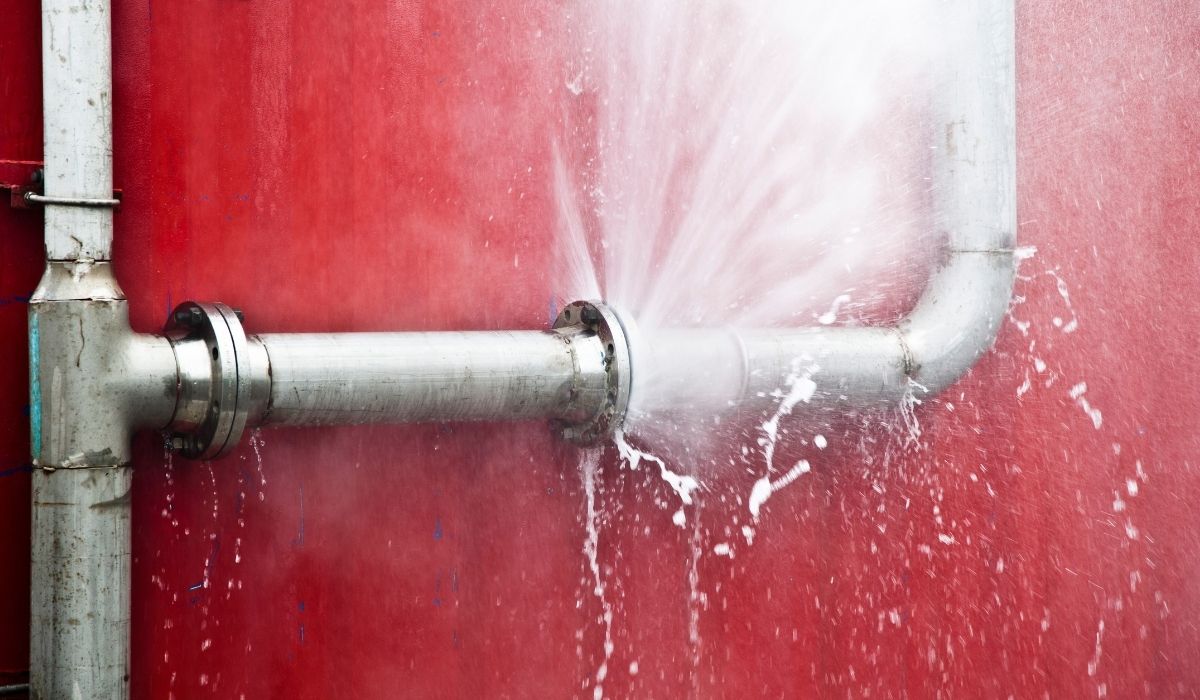Is Bleach Effective Against Mold? A Comprehensive Analysis
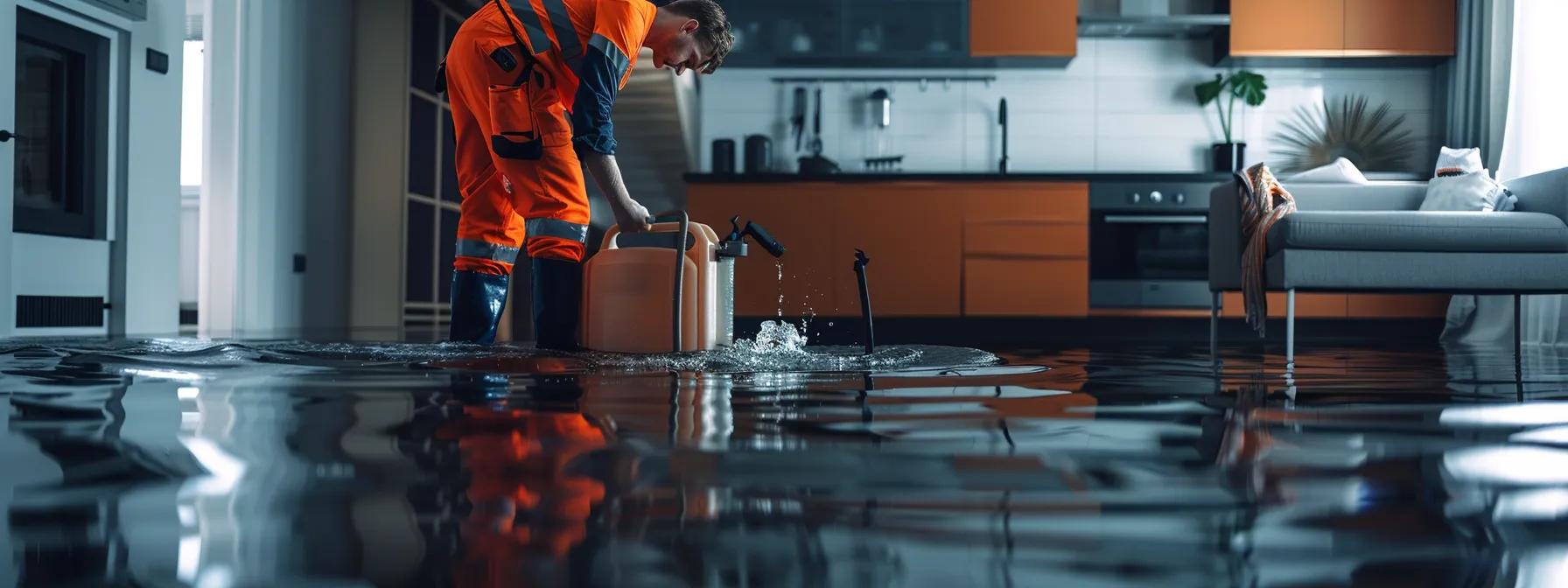
Never Use Bleach to Treat, Clean or Kill Mold? Read Why!
Mold growth in homes is a serious issue that poses risks not only to the structure of the building but also to the health of its occupants. Many homeowners have turned to bleach as a first-line cleaning agent due to its availability and reputation as a disinfectant. However, using bleach might seem like an easy solution for mold removal, but it can actually be counterproductive when it comes to treating, cleaning, or killing mold completely. This article presents a detailed examination of why bleach falls short in mold remediation, discussing its inability to neutralize mold roots, risks associated with its use, and alternative remedies that provide more permanent, health-friendly results. It also highlights scientific studies, peer-reviewed research findings, and professional mold remediation insights that focus on the long-term benefits of using safer, more effective methods. The discussion provided is vital for homeowners wanting to restore their indoor air quality while maintaining the integrity of their living spaces without risking further health concerns.
Transitioning from the introductory context, the article delves into the specific reasons why bleach does not effectively handle mold and explores the associated risks and misperceptions commonly held about bleach’s capabilities.
Understanding the Bleach vs. Mold Ineffectiveness: Why It Fails for True Removal
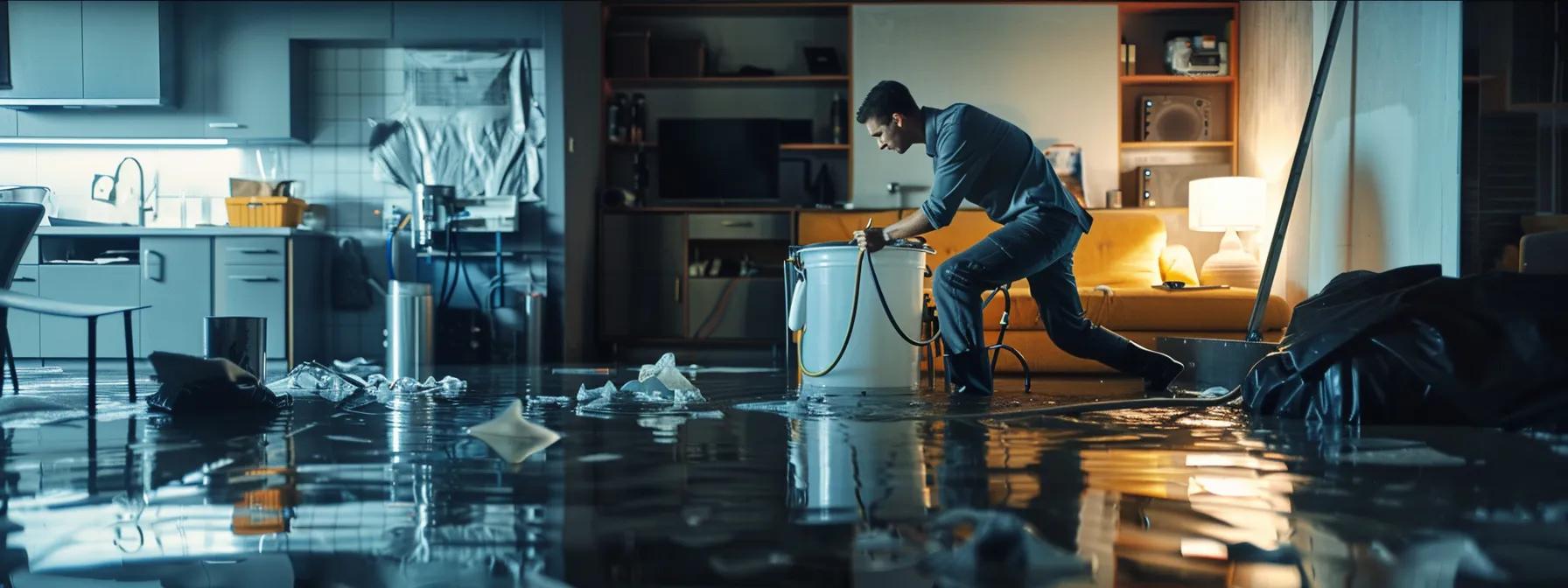
Bleach is widely promoted in many cleaning guides and household manuals as a powerful disinfectant; however, its actual effectiveness against mold is limited to surface-level discoloration rather than addressing the underlying growth and roots of mold colonies. The first key point to understand is that bleach primarily attacks pigment and does not penetrate deeply into porous materials where the mold has truly established itself. Scientific studies, such as the one conducted by the Journal of Occupational and Environmental Hygiene (2004), report that while bleach kills superficial mold cells, the spores and hyphal fragments embedded deep within materials remain largely unaffected. This can leave behind a dormant mold reservoir that can regrow, particularly when moisture conditions persist.
Bleach’s active ingredient, sodium hypochlorite, reacts rapidly with water and then evaporates, leaving behind a residue that does little to disrupt the organic structure that supports mold. Porous surfaces like drywall, fabric, and untreated wood absorb water and chemical solution incompletely; thus, the penetration of bleach is shallow at best. Moreover, the water content in a bleach solution can inadvertently fuel further mold growth beneath the surface, a phenomenon noted in research from the University of Iowa (2013), where post-treatment conditions allowed for accelerated regrowth due to residual moisture.
Bleach Only Addresses Surface Stains Not Mold Roots
Bleach can remove the visible stains often associated with mold, but these stains merely indicate where mold colonies have existed and are superficial in nature. By merely eliminating the discoloration, bleach gives the false appearance of comprehensive cleaning while the root networks—comprising mycelium and spores—remain embedded in the substrate.
How Porous Materials Render Bleach for Mold Removal Useless
Porous materials act like sponges; they not only absorb liquids but also provide a sheltered environment for mold growth. When bleach is applied, it may disinfect the outer surface, yet its inability to reach into the micro-pores of materials means that the internal mold colonies continue to thrive. Additionally, a short contact time and inadequate penetration leave behind pockets of moisture that facilitate further mold proliferation.
The Water Content in Bleach Can Feed Hidden Mold Growth
The solution used in bleach applications contains significant water, which in humid or poorly ventilated spaces can sustain mold growth. This means that while the surface may be cleaned superficially, the water can seep into the material, making the environment more conducive to the persistent mold. This inadvertent feeding cycle has been documented in studies examining indoor mold recurrence, where moisture retention correlated with rapid regrowth.
Why Mold Appears Gone but Quickly Returns After Bleach Application
Given the limited penetration depth and the moisture introduced during application, mold may appear to be eliminated initially. However, once the bleach evaporates, the hidden mold colonies find a renewed resource in ambient humidity and residual moisture. The seeming temporary improvement is therefore deceptive: the mold quickly resurfaces, often in more aggressive forms.
Documented Limitations of Bleach in Mold Remediation Guidelines
Professional state and federal guidelines, such as those from the U.S. Environmental Protection Agency (EPA), clearly indicate that bleach is not suited for mold remediation because it does not remove the mold structures from porous surfaces. The EPA emphasizes the necessity for clearing the moisture source and using fungicidal cleaners specifically designed for mold. These guidelines are backed by numerous studies that reveal how bleach consistently falls short when applied under real-world conditions.
Key Takeaways: – Bleach primarily disinfects surface stains but does not destroy mold roots. – Its inability to penetrate porous materials leaves hidden mold colonies intact. – The water content in bleach solutions can inadvertently sustain mold growth. – Professional guidelines and studies confirm bleach’s documented limitations.
The Risks Involved When Attempting Bleach for Mold Removal

When homeowners rely on bleach for mold remediation, several risks can emerge that may compromise indoor air quality and overall health. First, using bleach generates toxic fumes that are harmful—especially for individuals with respiratory conditions such as asthma. Chlorine gas, a byproduct of mixing bleach with the moisture found in mold, poses a risk of respiratory distress and irritation to the mucous membranes of the eyes and throat. Numerous studies published in Environmental Health Perspectives (2006) have linked prolonged exposure to chlorine fumes with chronic respiratory issues and acute symptoms like coughing and difficulty breathing.
Toxic Fumes Released by Bleach Impact Indoor Air Quality
Bleach releases volatile compounds that degrade air quality inside enclosed spaces. The fumes can accumulate, posing immediate and long-term health hazards. Research indicates that even short-term exposure can trigger respiratory symptoms and exacerbate conditions such as bronchitis and asthma, particularly in children and the elderly.
Chemical Reactions When Bleach Mixes With Other Cleaners
A further risk emerges when bleach inadvertently comes into contact with other household chemicals. Mixing bleach with ammonia or acidic cleaners produces dangerous toxic gases, including chloramines and chlorine gas. These reactions not only undermine the cleaning process but also present a risk of chemical burns and respiratory damage. Such hazardous reactions have been well documented by the American Association of Poison Control Centers.
Damage Bleach Causes to Surfaces and Materials
Beyond health risks, bleach can be highly damaging to the surfaces it is meant to clean. Porous materials like wood, drywall, and fabric may experience accelerated degradation. Long-term use of bleach can compromise the integrity of these materials, leading to discoloration, brittleness, and eventual structural damage. This damage can create more crevices and surface irregularities, inadvertently creating further niches for mold colonization in the long run.
Health Concerns Associated With Bleach Exposure During Mold Cleaning
When performing mold cleaning with bleach, direct contact and inhalation of the chemical can lead to skin irritation, eye damage, and respiratory issues. This is particularly dangerous for workers or homeowners who may not be using adequate personal protective equipment (PPE) such as n95 respirators, goggles, and gloves. Health studies emphasize that prolonged exposure to bleach, even in diluted forms, may lead to long-term sensitivity or chronic conditions.
How Bleach Can Worsen Spore Dispersal
Ironically, when bleach is applied to mold, it can trigger the release of spores into the surrounding air. This dispersal can spread the mold problem to previously unaffected areas of the home. The aerosolized spores are difficult to contain and can be inhaled, posing a serious health risk and undermining the presumed cleaning efforts.
Key Takeaways: – Bleach exposes occupants to toxic fumes that degrade indoor air quality. – Dangerous chemical reactions can occur if bleach mixes with other cleaning agents. – It damages surfaces, potentially increasing the vulnerability to mold. – Direct exposure without proper PPE presents significant health risks. – Bleach application can lead to increased mold spore dispersal.
Debunking Common Myths About Bleach's Power Against Mold
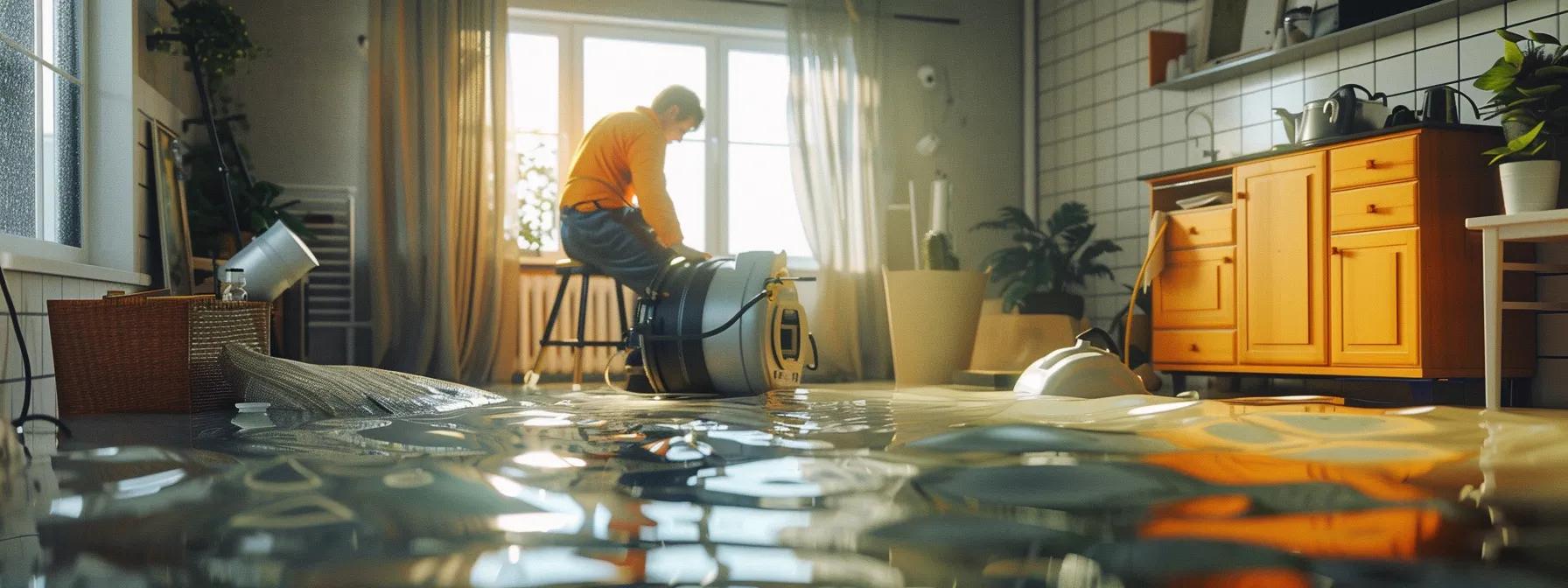
A number of myths persist about bleach’s efficacy, especially the widespread belief that its disinfecting capability guarantees complete mold elimination. Many homeowners mistakenly trust the “clean smell” of bleach-treated surfaces as a sign that all mold has been neutralized. However, the reality is far different: the odor is simply a byproduct of the chemical reaction rather than proof of successful remediation.
The Misconception That Bleach Disinfects All Mold Types
One of the most dangerous misconceptions is that bleach will kill every kind of mold. While bleach may be effective against certain bacteria and viruses on non-porous surfaces, mold species vary widely in their structure and resilience. Studies have shown that molds such as Aspergillus and Cladosporium are much more resistant to bleach’s effects due to their spore-forming capabilities. The inability of bleach to penetrate mold morphology means it often fails against resilient strains that thrive in high-moisture, low-light conditions.
Why a "Clean Smell" After Bleach Does Not Mean Mold Is Eliminated
The cleaning agents in bleach can leave behind a strong, hygienic scent that may give a superficial impression of thorough sanitization. However, this olfactory signal is misleading; the bleach can remove odors temporarily while the active mold cells and spores remain unaffected beneath the surface. A clean scent does not correlate with reduced mold viability, and post-treatment testing is often necessary to confirm the absence of mold.
Addressing the "Kills 99.9% of Germs" Claim in Relation to Mold
Bleach is often marketed as a chemical that “kills 99.9% of germs,” a statistic widely cited for bacteria and viruses. However, this claim does not extend to mold, which has a different physiology and lifecycle. Furthermore, such statistics are generally derived from controlled environments and laboratory settings, not reflecting the complexities found in home environments. In practical applications, mold’s embedded hyphae remain a significant source of regrowth even after bleaching.
How Bleach Fails to Neutralize Mycotoxins Produced by Mold
Mycotoxins are secondary metabolites produced by mold which can have severe health implications. Bleach is ineffective at neutralizing these toxic compounds, leaving behind a hazardous environment even after the visible signs of mold have been addressed. This reality has been supported by research from the International Journal of Environmental Research and Public Health (2018), which demonstrated that mycotoxins persist after routine bleach cleaning, posing ongoing health risks to inhabitants.
The Truth About Bleach's Effectiveness on Non-Porous vs Porous Surfaces
Bleach is more effective on non-porous surfaces where it can create a residual disinfectant layer; however, mold usually inhabits porous materials where it is shielded from contact. This disparity means the common recommendation to use bleach for mold often fails practically. Moreover, recent guidelines from mold remediation experts emphasize that the use of bleach on porous substrates does little to prevent future encapsulation of mold spores and may even compromise the material’s long-term durability.
Key Takeaways: – Bleach does not kill every type of mold, particularly those that are resistant like Aspergillus. – A clean smell post-bleach is misleading and does not confirm total mold eradication. – Claims such as “kills 99.9% of germs” do not apply to mold systems. – Bleach cannot neutralize harmful mycotoxins produced by mold. – Its efficacy is limited to non-porous surfaces and fails for porous materials.
Implementing Effective Mold Cleaning Methods for Lasting Results
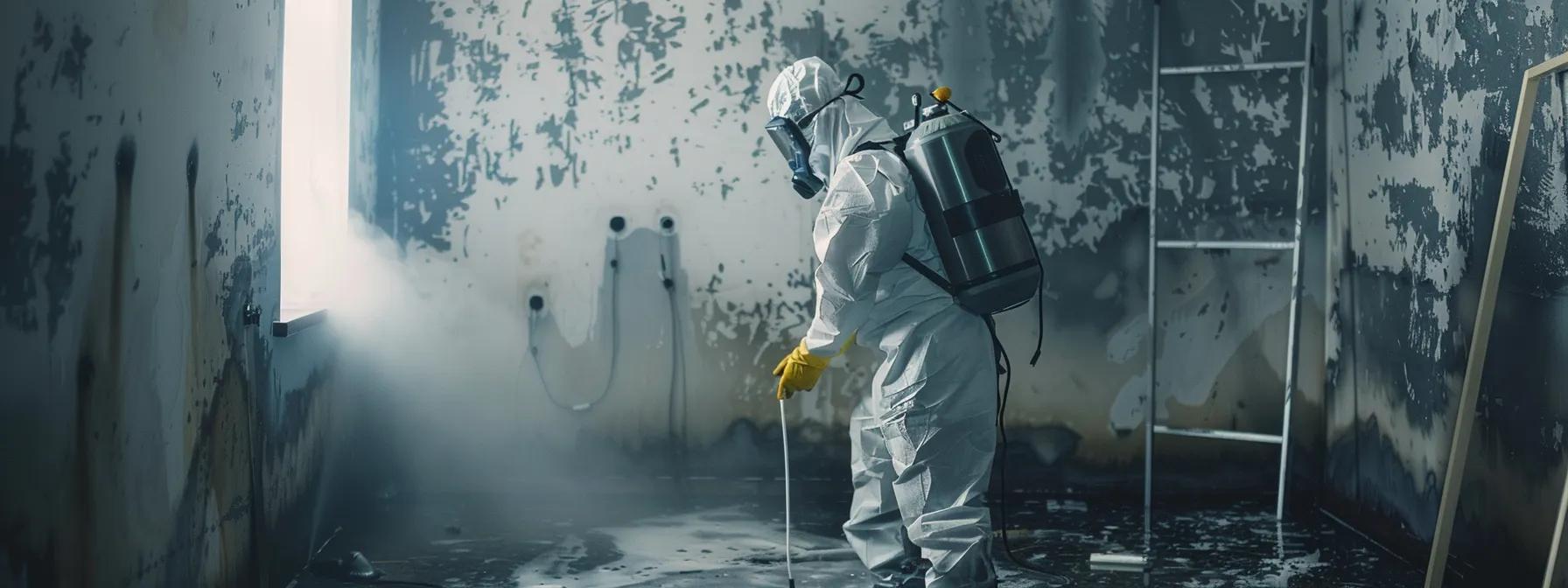
Given the limitations of bleach for addressing mold, homeowners must adopt a comprehensive approach to mold remediation that targets the moisture source and eliminates hidden colonies. Effective mold cleaning begins with a thorough assessment of the affected area to identify all instances of mold growth, including those not visible to the naked eye. Professional remediation teams stress that merely wiping away mold on the surface is not sufficient; complete eradication hinges on addressing the underlying moisture problem. This includes identifying leaks, condensation issues, or areas of high humidity that foster mold proliferation.
Identifying the Moisture Source Is the First Step in Effective Mold Cleaning
Without eliminating moisture sources, any cleaning attempt is doomed to fail. Home inspectors and remediation professionals use moisture meters and infrared cameras to locate hidden damp areas. Once identified, repairing leaks in roofs, walls, or plumbing systems becomes essential. This proactive step stops the food supply for mold, creating a less hospitable environment for regrowth. In many documented cases, homes with persistent mold issues had unresolved moisture problems, reaffirming that control and prevention are as crucial as the cleaning process itself.
Using HEPA Vacuums for Safe Mold Spore Containment
A HEPA-rated vacuum is critical for mold cleaning because it filters out airborne spores rather than recirculating them back into the environment. HEPA vacuums capture particles as small as 0.3 microns, ensuring that the cleaning process does not worsen the indoor air quality. This method is typically used in tandem with wet cleaning measures, where the vacuum collects debris and spores after the initial removal process, thereby minimizing the spread of potentially harmful particles.
Applying Natural Solutions for Mold Removal
Natural cleaning agents such as vinegar, hydrogen peroxide, and tea tree oil have shown effectiveness in reducing and inhibiting mold growth. Vinegar, in particular, is known for its antifungal properties and low toxicity, making it a popular alternative in residential settings. Hydrogen peroxide oxidizes mold cells and can be used safely on many surfaces. In addition, industrial-grade borax is an eco-friendly solution that not only cleans but also leaves a protective residue against future growth, as supported by studies from the Journal of Environmental Management (2015).
Proper Techniques for Cleaning Non-Porous Surfaces Affected by Mold
When dealing with non-porous surfaces such as tile, glass, or metal, a combination of scrubbing and chemical disinfectants is often recommended. A stiff-bristled brush or microfiber cloth can effectively dislodge mold from these surfaces. It is crucial to work methodically, ensuring that every corner and crevice is adequately treated. In professional settings, tools like spray bottles and scrubbers are used to uniformly apply cleaning agents and remove residues, leaving behind a surface that is less likely to become reinfected.
Ensuring Thorough Drying After Any Mold Cleaning Method
Drying is arguably one of the most critical steps in mold remediation. Even the best cleaning agents cannot prevent regrowth if moisture remains. High-powered fans, dehumidifiers, or even professional drying equipment should be used immediately after cleaning to ensure that all surfaces and hidden spaces are completely dry. This step often involves continuous monitoring of humidity levels to confirm that the conditions are unfavorable for mold regrowth.
Key Takeaways: – Effective mold cleaning begins by addressing and repairing the moisture source. – HEPA vacuums are essential for safely capturing mold spores during cleaning. – Natural solutions like vinegar and hydrogen peroxide offer eco-friendly alternatives. – Methodical scrubbing and drying of non-porous surfaces ensure long-lasting results. – Thorough drying prevents residual moisture that fosters future mold growth.
Table: Comparison of Mold Remediation Methods
| Method | Key Steps | Tools Required | Benefits | Limitations |
|---|---|---|---|---|
| Chemical Cleaning | Apply disinfectant, scrub, rinse | Bleach, scrubbing brush, gloves | Fast-acting on non-porous surfaces | Poor penetration on porous materials; toxic fumes |
| Natural Solutions | Use vinegar or hydrogen peroxide, wipe dry | Vinegar, hydrogen peroxide, microfiber cloth | Low toxicity; eco-friendly | May require repeated applications; less potent |
| HEPA Vacuum Cleaning | Vacuum and filter spores | HEPA vacuum, protective mask | Captures airborne spores; improves air quality | May not remove mold from surfaces completely |
| Moisture Control & Repair | Identify and fix moisture source | Moisture meter, repair tools, dehumidifier | Prevents recurrence; addresses root cause | Initial cost and labor-intensive |
| Professional Remediation | Comprehensive cleaning & restoration | Professional equipment, PPE, advanced chemicals | Holistic approach; faster and more effective | Expensive; requires professional expertise |
Before using any chosen method, it is advised to evaluate the extent of the mold damage and consider consulting a professional if mold involvement is extensive or if sensitive individuals (like those with asthma or severe allergies) reside in the environment.
Selecting Appropriate Mold Remediation Products as Bleach Alternatives
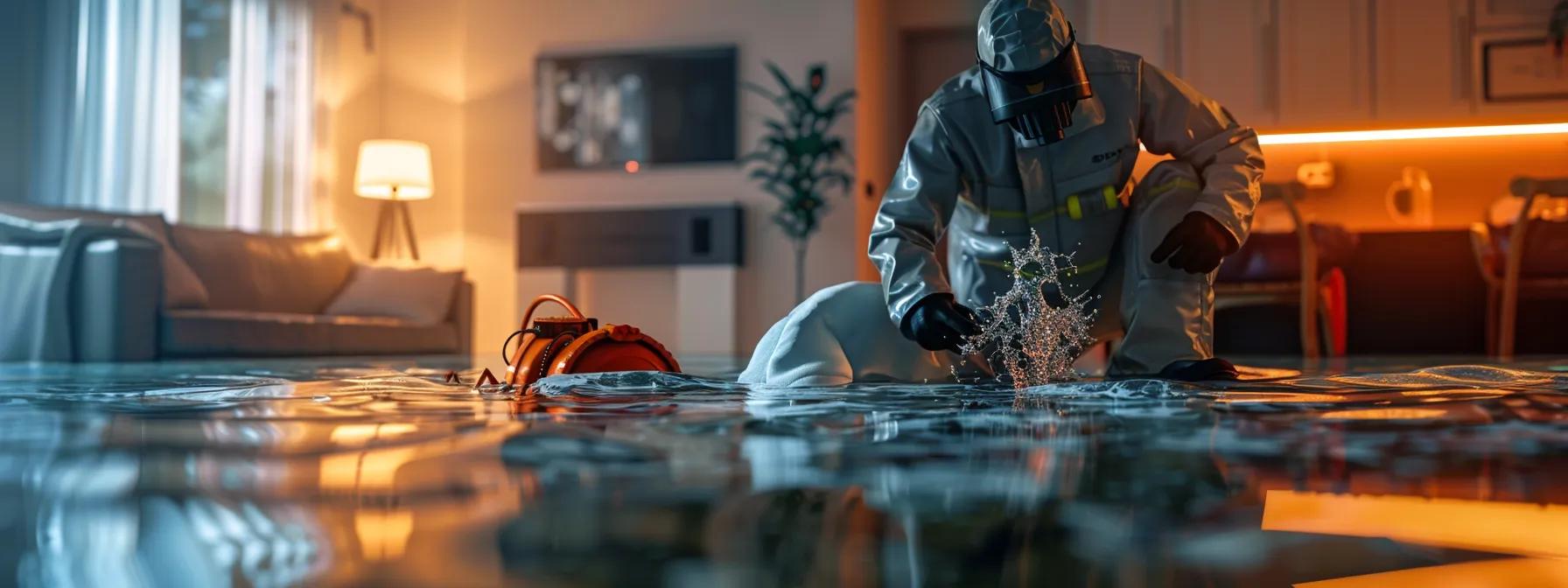
In light of bleach’s limitations, selecting alternative mold remediation products becomes imperative for effective and long-lasting cleaning. The modern market offers a variety of products specifically designed to deal with mold in a safe and environmentally responsible manner. These alternatives range from EPA-registered fungicides to natural, homemade cleaning solutions that use common household ingredients like borax and hydrogen peroxide.
Evaluating EPA-Registered Fungicides and Mold Removers
EPA-registered products are extensively tested for efficacy and safety and offer a higher likelihood of eliminating mold on both porous and non-porous surfaces. Products like mold and mildew removers from trusted manufacturers have been subjected to rigorous trials and are designed to not only kill molds but inhibit future growth. Although these products might be costlier than bleach, their benefits in terms of reduced toxicity and increased efficacy make them a preferred choice among professional mold remediation services.
Considering Borax-Based Mold Remediation Products
Borax, a naturally occurring mineral, has antifungal properties and works effectively as a cleaning agent when diluted with water. Borax solutions not only remove existing mold but also leave behind a residual barrier that deters mold reinfestation. Home remedies using borax have shown promising results, and borax-based cleaners are widely recommended as a low-toxicity alternative. The compound’s effectiveness is enhanced by its ability to penetrate porous materials, addressing growth that bleach typically leaves behind.
Utilizing Hydrogen Peroxide Solutions for Mold Treatment
Hydrogen peroxide is recognized for its oxidizing properties that break down the cell structure of molds and inhibit regrowth. Studies have found that a 3% solution of hydrogen peroxide can be as effective as chemical disinfectants, without the harmful fumes associated with bleach. Additionally, hydrogen peroxide decomposes into water and oxygen, leaving behind no toxic residue. This makes it an ideal choice for households with children or sensitive individuals concerned about indoor air quality. Its versatility, however, may require repeated applications to achieve complete mold eradication on heavily infested surfaces.
The Role of Tea Tree Oil and Vinegar in Mold Remediation Products
Tea tree oil and vinegar represent natural alternatives that have antifungal properties. While tea tree oil is a potent essential oil known for its effectiveness against various fungal organisms, vinegar has the benefit of low toxicity and high availability. When used correctly, these substances can inhibit mold growth and neutralize odors, though they are less effective on extensive infestations. Their natural origin and minimal environmental impact make these products a popular choice among eco-conscious homeowners.
Choosing Products Based on Surface Type and Mold Severity
Ultimately, the selection of mold remediation products must consider the type of surface affected and the extent of the mold growth. Non-porous surfaces such as tiles, metal, and glass respond well to disinfectants and hydrogen peroxide solutions, while porous materials like drywall, wood, or fabric require products capable of deeper penetration, such as borax-based cleaners. Professional-grade products are often necessary for severe infestations to ensure that the underlying mold colonies are also removed, thereby preventing recurring damage. Homeowners should always follow manufacturer guidelines and, if in doubt, seek advice from mold remediation professionals to choose the safest and most effective products for their unique circumstances.
Key Takeaways: – EPA-registered fungicides provide proven, safe, and effective remediation. – Borax-based solutions offer an eco-friendly option for porous materials. – Hydrogen peroxide is a non-toxic alternative that leaves no harmful residue. – Natural alternatives like tea tree oil and vinegar are suitable for light infestations. – Product selection must match the surface type and severity of mold growth.
When to Bypass DIY Bleach for Mold Removal and Call Professionals
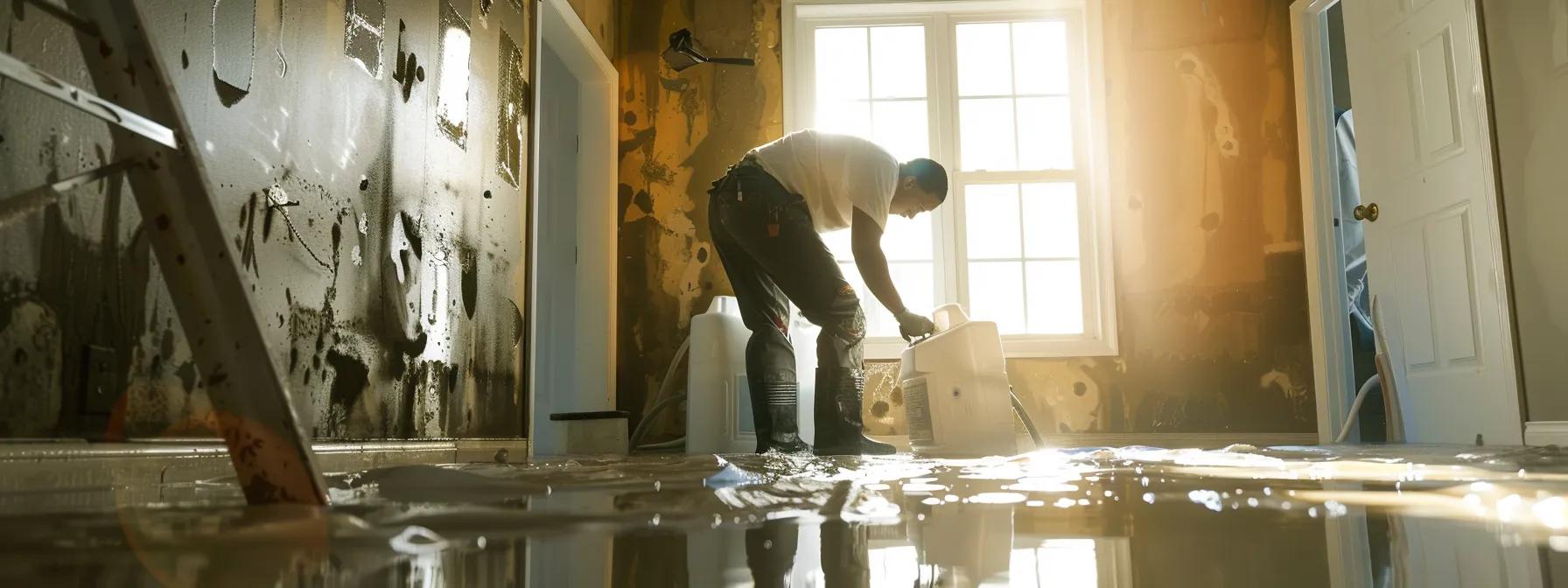
Not all mold problems can be effectively managed with DIY solutions. When mold growth becomes extensive or is situated in hard-to-reach areas like HVAC systems, professional remediation is highly recommended to ensure complete eradication. Professional mold remediators have access to superior equipment, including industrial-grade HEPA vacuums, advanced dehumidifiers, and specialized chemical treatments that go beyond household cleaning agents. These professionals conduct a comprehensive risk assessment of the affected space, including potential damage to the structure and health risks to inhabitants, before implementing a tailored remediation plan.
Recognizing Extensive Mold Growth Beyond DIY Capabilities
One of the earliest indications that professional help is needed is when mold covers a large area—typically more than 10 square feet, as suggested by the U.S. Environmental Protection Agency. In such cases, the risk of spreading spores during cleaning increases, and the likelihood of an incomplete cleaning job is high. Extensive mold can also signal underlying structural or moisture issues that require professional diagnostics and repair. Homeowners may witness dark, patchy, or even musty smells that persist despite multiple cleaning attempts with bleach or natural solutions.
Dealing With Mold in HVAC Systems Requires Expert Attention
Mold growth inside HVAC systems presents additional hazards as fungi can be aerosolized and distributed throughout the indoor air. Professional cleaning of these systems involves not only surface treatment but also disinfection of ductwork and replacement of filters. The complexity of HVAC systems requires specialized knowledge and equipment to ensure that mold spores are not inadvertently spread during the cleaning process, a scenario that could worsen indoor air quality and lead to persistent respiratory issues.
Understanding the Health Risks That Necessitate Professional Mold Remediation
Individuals with respiratory conditions such as asthma, allergies, or compromised immune systems are especially vulnerable to the effects of mold spores and mycotoxins. Professionals are trained to deploy correct personal protective equipment (PPE) including n95 respirators, goggles, and specialized suits during remediation. Their expertise minimizes the risk of contaminating healthy areas and ensures safety throughout the process. Peer-reviewed health research consistently highlights that improper mold remediation can exacerbate symptoms in sensitive individuals, making professional intervention not just a matter of structural repair but a public health necessity.
How Professionals Use Advanced Mold Remediation Products and Techniques
Professionals rely on a range of advanced products that are not typically available to consumers. These products include fast-acting EPA-registered fungicides, anti-spore treatments, and moisture control systems that work together to ensure a comprehensive cleaning cycle. Techniques such as containment procedures and specialized fogging treatments help neutralize airborne spores during the remediation process. Advanced drying techniques, along with humidity monitoring, are also deployed to confirm that the environment has been adequately restored before declaring the mold problem solved.
Ensuring Post-Remediation Verification for Complete Mold Eradication
After professional remediation, it is critical to perform post-cleaning verification to ensure that no residual mold remains. This verification may involve air quality testing, surface swab analyses, and visual inspections by certified experts. Such verification is essential to confirm that the remediation efforts have addressed both the visible mold and any hidden colonies, protecting the indoor environment from future health risks.
Key Takeaways: – Extensive mold growth (over 10 square feet) typically requires professional remediation. – Mold in HVAC systems should be handled by certified professionals due to risks of spore aerosolization. – Health risks, particularly for sensitive populations, make DIY solutions inadequate. – Professional techniques include advanced chemicals, containment, and thorough post-remediation verification. – Ensuring complete mold eradication protects both structural integrity and occupant health.
Frequently Asked Questions
Q: Can bleach be used on all surfaces for mold removal? A: Bleach is most effective on non-porous surfaces but does not penetrate porous materials where mold roots reside. It can remove visible stains temporarily but often fails to eliminate underlying spores, leading to regrowth.
Q: Why does mold reappear after cleaning with bleach? A: Mold often reappears because bleach only treats the surface without addressing hidden mycelium. The moisture in bleach solutions also fosters an environment in which dormant spores can become active again.
Q: Are natural alternatives, such as vinegar or hydrogen peroxide, better than bleach for mold removal? A: Yes, natural alternatives such as vinegar, hydrogen peroxide, and borax-based cleaners are more effective on porous surfaces. They are less toxic, offer eco-friendly benefits, and reduce the risk of regrowth by better penetrating mold-prone areas.
Q: When should a homeowner call a professional mold remediation service? A: Professionals should be called when mold covers extensive areas (over 10 square feet), is present in HVAC systems, or when residents experience severe respiratory issues. Experts have the tools and knowledge to safely and effectively remove mold and prevent recurrence.
Q: What precautions should be taken if attempting DIY mold removal? A: When attempting DIY mold removal, use protective gear such as n95 respirators, gloves, and goggles. Ensure proper ventilation and follow guidelines to remove moisture sources, but be aware that professional services are recommended for severe infestations.
Q: Do EPA guidelines recommend using bleach for mold cleaning? A: EPA guidelines advise against using bleach on porous materials because it is ineffective at removing the underlying mold and may worsen the situation by leaving moisture that fosters regrowth.
Final Thoughts
Bleach, despite its popularity as a household disinfectant, is not a comprehensive solution for mold removal. Its inability to penetrate porous materials and neutralize mold roots leaves lasting issues that can compromise indoor air quality and home structure. Instead, effective mold remediation should involve addressing the moisture source, utilizing safe and advanced cleaning products, and, when necessary, calling in professional services. Homeowners are encouraged to educate themselves on alternative methods and consider specialized products designed explicitly for mold remediation to safeguard their health and property.


